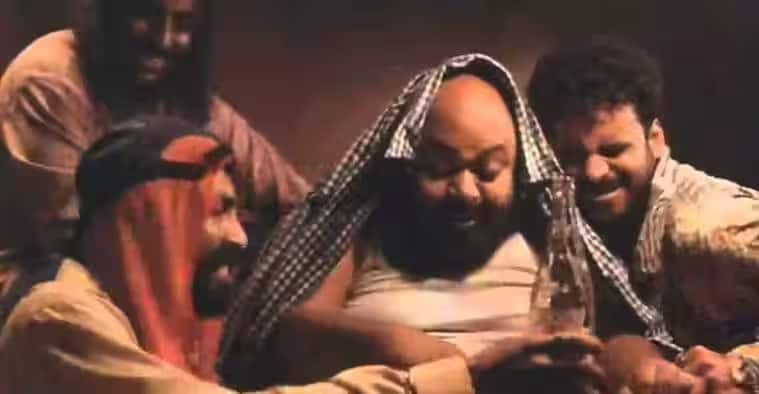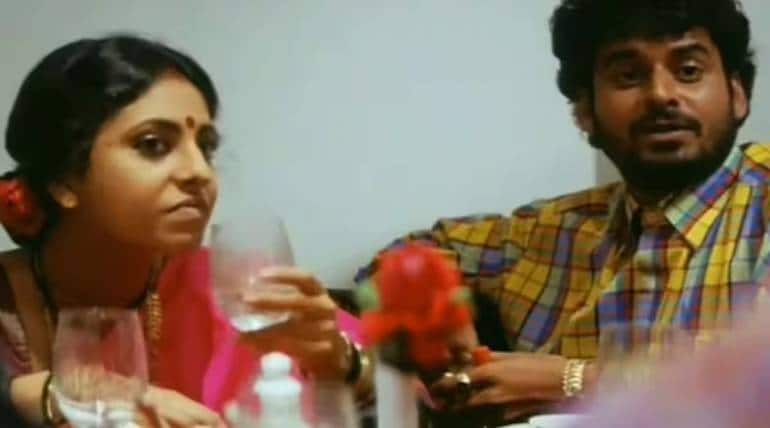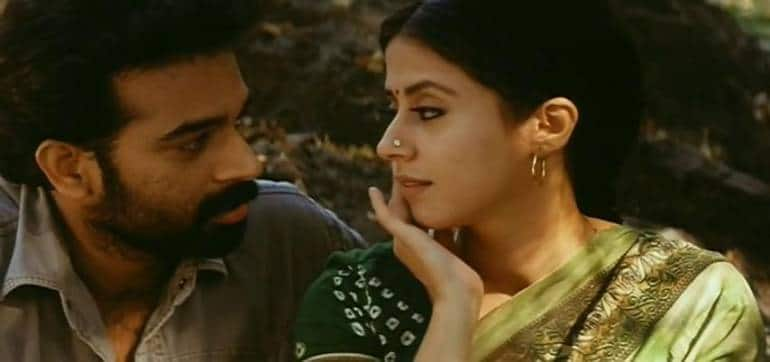



The beginning and end of the 1990s were two different stories for the creativity-dominant brain. The feeling we have of the world today, the post-pandemic euphoria about reboots and novelty, of forgetting and remembering at the same time, is a bit similar to how we felt in the early 1990s. We opened ourselves to the Internet. In India, by the mid-1990s, we pretty much instantly became slaves to things made by white people — they smelt good and spelled comfort and convenience. Guess what passed as “Mickey D” — we learnt it possibly from Beverly Hills 90210. It opened our big window to American soaps via satellite TV — and there, undressing with a lover was an actual scene on family TV. The Y2K scare was more exciting than frightening. Something new was happening in the world.
Anywhere in the world, in times of confusion, excitement and promise, creativity finds surprising doors. In Indian cinema, the 1990s were staggeringly driven by money and a globalised economy; and the world of cinema and entertainment ought to have had the impact. Shah Rukh Khan as Rahul in Dilwale Dulhania Le Jayenge (1995) tried to convince Indians across India and even in the diaspora that our globalisation moment has arrived, yes, we now drink Stroh’s beer and wear Diesel jackets, alright, but we still ask Papa ji before we can marry the love of our life. It was as fun as it was soothing. Colonised countries are big on balance and somehow holding on to status-quo.
A few years after his role as a friend of the hero in DDLJ, Karan Johar made his directorial debut with an Indian, Jatin-Lalit version of Archies with Kuch Kuch Hota Hai — so vanilla, but with a heroine who could finally be tomboy in college and after a heartbreak own the billowing, all-lulu chiffon saree look with aplomb.
I am only talking about mainstream entertainment here, not the variety of independent, experimental artistic experiments that continue on the margins of big studios anywhere, everywhere, all the time. If there was kitchen sink soaps on Star and Zee, there was Quick Gun Murugan and Udham Singh on Channel V. In big-money-and-big-stars Hollywood, originality sprung out in both content and form — for example, the Dudeism moment in the Coen Brothers’ off-kilter, zonked-out detective comedy The Big Lebowski, Peter Weir’s prophetic satire on a camera- and screen-ruled world, The Truman Show, and of course, the year before the millennium hit when we all bundled off to Goa hoping Y2K was indeed coming and brought in the new millennium raving at those parties that used to be a Goa-only thing at that time, Lily and Lana Wachowski gave us The Matrix to think about — and to think about for years to come!
In India, those kind of experiments weren’t seen, at least — it may have been dreamed up by someone, I am sure. The experiment that shattered all Bollywood tastes, was Ram Gopal Varma’s Satya. It wasn’t an original in terms of what the story was or the genre was. Varma took a fool-proof genre, the gangster genre, which already had good enough predecessors such as Varma’s own Siva (1989), Mani Ratnam’s Nayakan (1987) and Thalapathi (1991), and Vidhu Vinod Chopra’s Parinda (1989), and turned it into a film about Bombay and belonging. Journalist Uday Bhatia makes an engaging case of Satya as a film that affected our perception of Mumbai the city and the gangster genre in his book about the film, Bullets Over Bombay. It wasn’t new as “content” — it was a new form, a new way of looking at the wretched Bombay gangster. Its power was not in stylised violence or intense studies of evil, redemption, villainy or heroism. Its power came from the way Varma painted the shadows of this world with big, bright, brutal strokes. And it worked, both at the box office, for producer Bharat Shah who was already a puppet of the underworld dons by then — and also as a film that influenced writers and actors like very few other Bollywood films had before.
As if the lame Indian Archies wasn’t enough, 1998 had many film titles with the word “Pyar” in it, as Bhatia points out in his book: Pyar Toh Hona Hi Tha, Pyar Kiya to Darna Kiya, Jab Pyaar Kisise Hota Hai and others. Besides Kuch Kuch Hota Hai, among the top grossers at the box office that year were Vikram Bhatt’s Ghulam, Rajkumar Santoshi’s China Gate and Mani Ratnam’s Dil Se... “Crossover films” still didn’t make much sense, but English could be a language in Indian films that released in theatres for prime time shows: Kaizad Gustad’s monumental flop Bombay Boys (1998), Deepa Mehta’s first of the Elements trilogy 1947 Earth (1999), which got lukewarm, befuddled responses from audiences in India and Nagesh Kukunoor’s Hyderabad Blues, which swathes of Indian audiences liked.
So was it just a new treatment to the way a gangster film can be executed tat made Satya special?
 Saurabh Shukla as Kallu Mama in 'Satya' (1998).
Saurabh Shukla as Kallu Mama in 'Satya' (1998).
For those who want to watch Satya of the first time, it is a film about men who abandon life’s human connections to belong in a violent fold, to avenge their own brutal twists of fate, to make a mark, process grief as anger and live knowing death is around the corner. In today’s course-correcting parlance, these are the very epitome of “toxic men”. For reasons known best to him, Varma had a disclaimer at the end of the film that said he was not trying to promote violence or gangsterdom in this film and that his heart was with those who lost much because of the famous gangsters of Bombay. In its running time, the point of view was unapologetic. There was rawness, vulnerability, bravado, fearlessness and much to despise in these characters — Kallu mama (the name has stuck with Saurabh Shukla, who played this key role in the gang and co-wrote the film with Anurag Kashyap), Bhikhu Mhatre (Manoj Bajpayee, the emergent star), Shefali Shah in a role that lasted all of seven minutes but which established her as an actor of raw power and got her the most interesting role of Ria in Mira Nair’s global hit Monsoon Wedding (2001).
 Shefali Shah and Manoj Bajpayee in a still from 'Satya' (1998).
Shefali Shah and Manoj Bajpayee in a still from 'Satya' (1998).
In most interviews, Varma has said that he didn’t care how the tide was turning at that time. The whole point was to not care about that — and that’s a kind of approach that actor milieus on the fringes of big Bollywood were perhaps waiting for. It mattered that for a script that had no promise of commercial success, Bharat Shah was its producer. The film’s budget was around Rs 2.5 crore. Bajpayee, Shah, Shukla, and several others including Sushant Singh, Makarand Deshpande, Sanjay Mishra, Manoj Pahwa and others finally believed they mattered and that they were equally capable of magic as the established stars.
 Chakravarthy and Urmila Matondkar in 'Satya' (1998).
Chakravarthy and Urmila Matondkar in 'Satya' (1998).
The only star was Urmila Matondkar who played Satya’s girlfriend and was in Manish Malhotra saris. It established her, yet again, that she was Varma’s muse. Gulzar’s insufferable lyrics in the song Geela Geela Paani was picturised on her with as soft a focus as it possible for Varma. At a recent interview with critic Anupama Chopra, Shah remembered a scene in which her husband Bhiku returns after being incognito for a few days. The wife screams at him in anger, he slaps her in front of Satya (R Chakravarthy in the eponymous lead role that rested entirely on how he and his eyes looked), they lock the door and she slaps him right back, and in seconds, most convincingly, it turns into a romantic moment between the two. Shah said there was a lot happening in that scene. It was their relationship in a moment — they wouldn’t be vanilla in bed for sure. “Toxic” in woke bibles.
There was a let’s-see-what-happens kind of energy on the sets. Varma has said that it’s not he or the writers or actors who made Satya, but Satya made all of them. Varma’s attempt at a sequel was disastrous, much like a lot of his later movies. In 2002, he made a better gangster film, Company, with Ajay Devgan in the led role. It is the best gangster film ever made in Bollywood and Varma continues to rest his greatness on it and the great improvised magic that was Satya.
Discover the latest Business News, Sensex, and Nifty updates. Obtain Personal Finance insights, tax queries, and expert opinions on Moneycontrol or download the Moneycontrol App to stay updated!
Find the best of Al News in one place, specially curated for you every weekend.
Stay on top of the latest tech trends and biggest startup news.